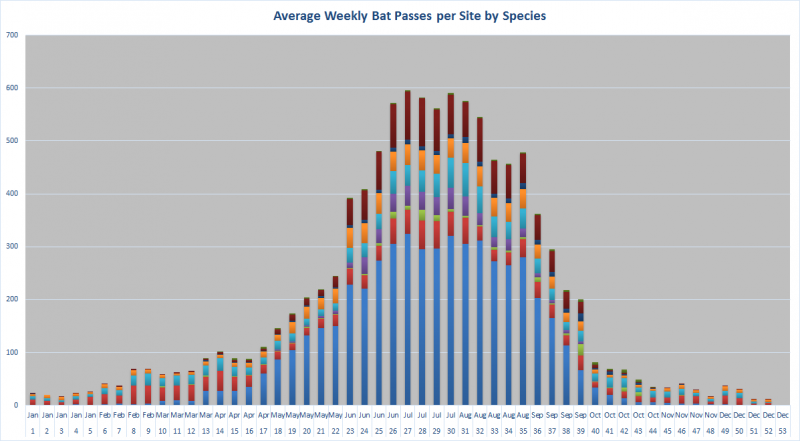Montana Bat and White‐Nose Syndrome
From Montana Tech High Performance Computing
Braden Burkholder, Bryce Maxell, and Dan Bachen
Montana Natural Heritage Program
Montana’s bat species face a wide array of conservation issues that threaten their long-term viability. The potential arrival of White-nose Syndrome (WNS) may be the single greatest threat as mortality has exceeded 95% for some bat populations in eastern North America. A collaborative project between state and federal agencies was initiated in 2011 to collect baseline data prior to the arrival of White-nose Syndrome and help inform surveillance and future mitigation strategies. One highly effective and non-invasive method for collecting baseline data is to record bat echolocation calls in their native habitats, which can then be used to identify the number and species of bats present at a location during different seasons. In the last 6 years, we deployed a network of ultrasonic acoustic detector/recorder stations at more than 75 sites across the region. Each detector recorded nightly bat passes across all seasons. As of August 2017, over 10 million full spectrum sound files have been recorded, totaling over 50 TB of call data.
In order to efficiently interpret these data, we use software to complete automated analysis of recorded bat calls. This software examines and measures hundreds of attributes of the echolocation calls in each sound file and assigns tentative species identification to calls when appropriate. A small subset of high quality calls is then hand-classified to confirm species identification. As software packages are occasionally updated with improved classification methods and algorithms, our dataset was analyzed with varying methods over the 6 years of data collection and automated processing. Using the HPC, we were able to reanalyze millions of bat call files with the most up-to-date methods and this process was completed in days instead of years. Our dataset is much more robust and accurate with respect to automated species identification and data trends over time and our hand classification efforts our now more focused and efficient. Most importantly, our project partners can use these data in planning conservation efforts and decision making with a higher degree of confidence.
Braden Burkholder, Bryce Maxell, and Dan Bachen
Montana Natural Heritage Program


